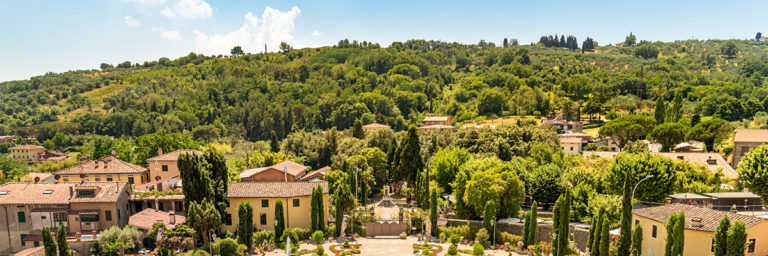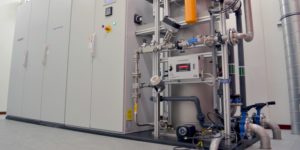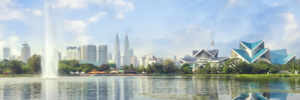Ozone Solution Disinfects Wastewater Up To 99.9 Percent

Historic Garden Garzoni in Collodi, in the municipality of Pescia, province of Pistoia in Tuscany, Italy (Image source: Xylem Inc.)
The area has a complex composition of effluents coming from the industrial sector and, to a small extent, from the urban area that leads to the treatment plant. In addition, the body of water where the final discharge is delivered is classified as a “sensitive area.” This led the Consortium to integrate Wedeco's ozone technology as a tertiary wastewater treatment process, in order to maximize the purifying effectiveness of the plant and improve the treatment before discharging into the body of water.
The issue of color
Since the local paper industry manufactures colored products, this led to the evaluation of treating any residual color in the wastewater. The treatment of dye and pigment residues used in the paper industry is no trivial matter. For this reason, the managers of the Consortium chose to adopt innovative ozone technologies to improve the problem of residual coloring in water effluents. The ozone molecule is actually able to reduce the residual organic load and eliminate the chromatic effect of the effluents due to an effective oxidizing action.
Ozone is the solution
Putting their trust in experience gained over the years, the managers of the Consortium chose the solution proposed by Xylem to maximize the effectiveness of the wastewater treatment. Following an in-depth analysis carried out by technicians from both parties, it became evident that the use of ozone treatment would considerably reduce not only the problem of the residual color in the water effluents, but also the residual bacterial load, thus improving the quality of the water discharged.
Experimentation begins
It was decided to proceed with a gradual approach, with an initial six-month, purely experimental phase, involving dosing ozone into the water effluents, before the final discharge into the body of water. The results of the experimental phase were largely positive and prompted the managers of the treatment plant to purchase Xylem’s Wedeco ozone generator and equipment.
The results
The Xylem technicians set up a container for the ozone generation system, along with equipment calibrated to the needs of the Consortium. The ozone generator was also equipped with an automated control system. During the experimental phase, the effectiveness of the ozone treatment on problems related to color, bacterial load and COD in water effluents was immediately confirmed by the technicians of the Consortium’s laboratory. The results were also confirmed by inspectors that sample the water discharged into the body of water.
When fully operational, the installation at the Consortium can produce up to 2.5 kilos of ozone per hour. This amount of ozone would allow for the treatment of up to 400 cubic meters/hour of water effluents, achieving a 99.9 percent reduction in bacterial and viral load (i.e. 3 Log). This means the ozonation process implemented at the Consortium would meet local requirements for direct discharge to local waters and could also be utilized for reusing the treated water.
Ozone can even be used in sludge
In order to ensure an effective tertiary treatment of the water before discharge, and prevent an abnormal pollution load (such as a particularly concentrated bacterial load), the ozone dosage is slightly higher than theoretical requirements. Excess gas is re-introduced upstream of the treatment process in order to avoid any waste.
Source: Xylem Inc.






